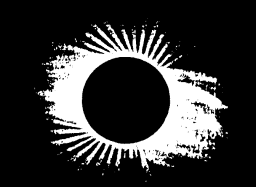 |
Science Frontiers ONLINE No. 126: Nov-Dec 1999 |
|
|
It's All In The Seeing
The August and September issues of Sky & Telescope contain articles that attempt to discredit long histories of observations of Transient Lunar Phenomena (TLPs) and the many, many anomalous coronas seen during total solar eclipses. Both classes of phenomena are written off as either observer misperceptions or idiosyncracies of the earth's atmosphere. Of course, such treatment of strange phenomena is not new, nor is it undesirable, for we do want to confront reality whatever it might be. However, the two "wipes" in Sky & Telescope do seem a bit arrogant, especially when famous scientists do not hesitate to employ ghostly ephemera to support theories favored by the establishment.
Strange eclipses. Down the years, many fantastic solar coronas have been sketched during the few minutes of totality. Long coronal petals and errant streamers, often asymmetrically arrayed, are common in the Nineteenth Century astronony journals. Scientists have no problems with these. It is the highly geometrical coronas that are hard-to-account-for. The reported colored coronas, too, seem unlikely. Red, blue, and green hues are definitely frowned upon. Coronas should be brilliant white, perhaps yellowish.
S.J. O'Meara, a contributing editor of S&T, thinks many of the older and wilder drawings of coronas can be pinned on observer enthusiasm and active imagination. Modern photographs of coronas provide a much more conservative picture of the eclipsed sun. As for all those old observations of colored coronas, aerosols in the atmosphere, perhaps of volcanic origin, could have added the delicate tints reported. No unusual phenomena were involved. Problem solved!
(O'Meara, Stephen James; "Strange Eclipses," Sky & Telescope, 98:116, August 1999.)
| E.L. Trouvelot's portrait of the total solar eclipse of July 29, 1878 as seen from Wyoming. Note the geometrical symmetry of the spectacular corona. |  |
The TLP Myth. There is a long history of Transient Lunar Phenomena (TLPs). Almost as soon as the telescope was invented, observers began seeing flashes of light, color changes, and other luminous phenomena on the moon. Reddish glows around the rims of the craters Aristarchus and Alphonsus have long been accepted as objective scientific observations. The most popular explanation of these color phenomena involves the eruption of gases around the craters.
In 1964, in an attempt to better understand TLPs, NASA organized a network of amateur lunar observers with communication links to the Corralitos Observatory in New Mexico. Corralitos possessed a 5-inch reflector equipped with color filters which could checkout network sightings. In almost 3,000 hours of surveillance, no color phenomena were recorded using the Corralitos instruments -- even when the network reported a colored TLP in progress. Are all TLPs therefore illusory?
The NASA program certainly suggested that TLPs might be subjective phenomena, perhaps something like the colored coronas observed during solar eclipses. TLPs are still reported nevertheless. And there are also recognized phenomena that might account for TLPs. One such phenomenon is prismatic dispersion in the earth's atmosphere. On the moon's surface, thermoluminescence is a possibility, as is the fluorescence of lunar soils being bombarded by solar wind.
Even so, the gist of this S&T article can be seen in the following sentence:
"It is far easier to believe that misinterpretations of mundane atmospheric and instrumental effects are responsible."
In other words TLPs, like anomalous coronas, can all be written off as observer illusions!
(Sheehan, William, and Dobbins, Thomas; "The TLP Myth: A Brief for the Prosecution," Sky & Telescope. 98:118, September 1999.)
Comment. However, it is perfectly acceptable to enlist vague, marginal phenomena to support theories that are approved by mainstream science. See below.